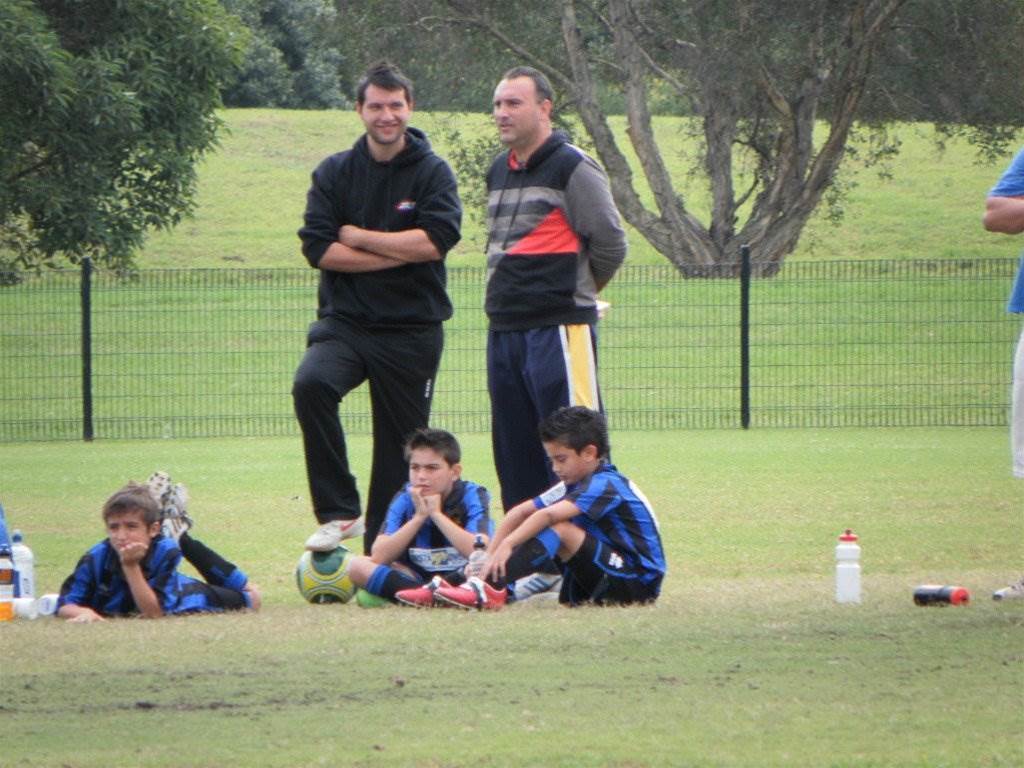Former Socceroos Peter Katholos and Jim Patikas as well as FIFA accredited agent Peter Paleologos discuss whether Aussie kids should stay here or go overseas to pursue a professional career.
The latest figures of Aussies playing abroad shows there are currently 215 footballers playing the round ball game on pitches all across the globe. That’s almost 20 football teams.
While some are playing in Europe’s top leagues there are many youngsters plying their trade in the lower divisions and in destinations like Latvia, Lithuania and Iceland.
If you looked at that list 10 years ago there were 122 players. In the current Aussies abroad list 133 of the 215 are 23 and under.
It’s hardly surprising that more and more youngsters are heading overseas especially as there are only nine Australian teams in the A-League.
During the former National Soccer League (NSL) there were an extra 250 positions because there was 16 clubs with fewer foreigners.
One player who flourished in the NSL was former Socceroo Peter Katholos who also represented Australia on 22 occasions and had a short stint in Europe.
Post his playing career Katholos has been involved with youth development and scouting. He has also had a hand in a number of transfers of Australians to overseas clubs.
He believes that going abroad at a young age is vital for a player’s development.
“You need to leave even earlier than 15-18 if you want to be in their system,” he said speaking to FTBL. “Even at 15, although it sounds stupid, it might be too late.

"These clubs overseas that are building players they need them early because they need to get them ready according to their training methods and their standards. It’s all about development.”
Katholos believes that trying to make it in Europe in your late teens is much harder these days as scouts are looking for established players.
“When they get a bit older they needed to have already made it in the A-league, but as we know there are limited opportunities,” he said.
“Those players need to have played in Australia for a few years to establish themselves and also have made the national team to have a chance of making it, otherwise you won’t even get a look in.”
Before Jim Patikas embarked, at the age of 20, on a successful decade long career in Greece in the early 80s, he was a star of the NSL and had amassed close to 20 Socceroos caps.

Today he is involved in scouting and coaches St George U13s, U14s as well as the Inter Lions U12s and is adamant young players should only go to Europe under the right circumstances.
“It depends on the coach that wants to sign you and what reason you are going there for,” he said.
“If you can’t make a National Premier League side in Australia at 15-16 and you say, ‘It’s all shit here in Australia and I’m going to go there because it’s better’, then I don’t know about that attitude.
“But if you are that age and you are doing well and they have asked you to go and they like you, then do it.
“But just to do it because you want to bag the Australian coaches or the Australian system, I don’t think that is a good enough reason.”
Peter Paleologos is a former president of the Australian Football Agents Association.
As well as being a player agent he is also a football lawyer with experience dealing with regulatory issues that affect U18 Australian players transferring overseas.
When it comes to the Australian v European pathway, Paleologos has sobering statistics regarding both.
“Very few players make it to A-League from the NPL now,” he said.
“The number from the National Youth League is a little higher due to the requirement to have at least three U21s on a club’s A-League roster.
“The bigger question is regarding those who gets an initial contract for scholarship, how many actually get a second senior professional A-League contract.
“Also 80% of Australian players who go overseas are back in Australia within three years and only four out of every 100 Australian players who go to Europe make it a long-term career stay (over 10 years).”

Paleologos admits parents and youngsters have much to think about when deciding to pursue a career overseas.
“Each application to transfer overseas by players who are minors (under 18) must be approved by FIFA’s Players Status Committee and the FFA in order to release the young players International Transfer Certificate,” he said.
“This needs the support of a good agent or football lawyer to guide you in the process.
“An Australian youth player who is committed to the European pathway also needs to consider various factors including complying with regulatory requirements and cultural challenges.
“They also need to be better than most locals, adapt to the training and tactical levels and meet passport requirements.”
Despite all the red tape and low chances of making it abroad, playing overseas can result in a future gig in the A-League.
Paleologos added: “If an Australian youth player does play senior European football (even in second or third divisions in some countries) then the trends indicate that this opens up significant opportunities to develop a professional career overseas as well as a return to the A-League.”
Related Articles

Champion A-League coach set to join Premier League giants

Split decision: Popovic in mix as Hajduk hunt new boss













